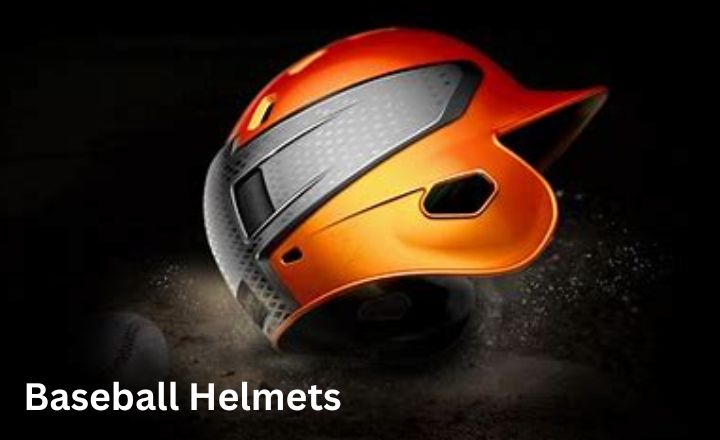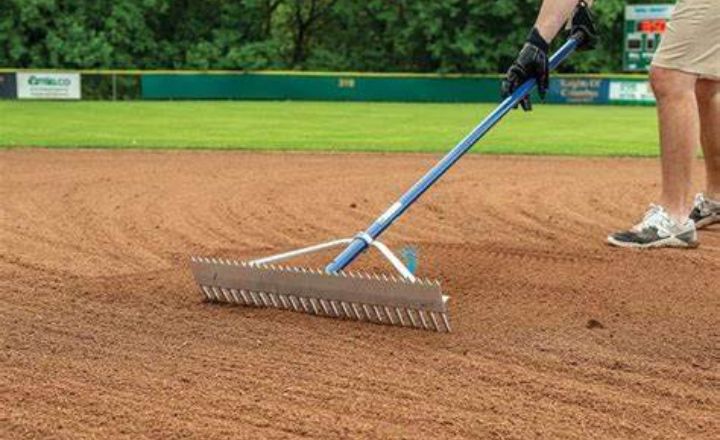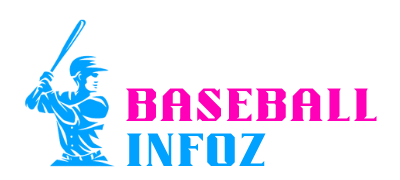Baseball, captivates fans worldwide with its blend of athleticism, strategy, and tradition. At the heart of the game lie essential pieces of equipment that enable players to perform at their best while ensuring safety and fair play on the diamond.
From bats to gloves, helmets to cleats, each item serves a critical role in the sport’s rich tapestry. In this comprehensive guide, we delve into the Baseball Equipment List required for baseball players of all ages and skill levels.
Join us as we explore the tools of the trade that fuel the excitement and passion of baseball, from the crack of the bat to the roar of the crowd.
Baseball Equipment List :
Each piece of baseball gear plays a crucial role in the game’s success and enjoyment. Understanding the importance of these essentials helps players, coaches, and fans appreciate the intricacies of the sport and the dedication required to excel on the diamond. Here we have discussed the baseball equipment list in Detail.
Baseball Bats:
Bats are vital offensive tools in baseball. They come in various materials like wood, aluminium, and composite. Wooden bats offer a classic feel and are preferred in professional leagues. Aluminium and composite bats are more durable and often used in amateur leagues.
Bats vary in length, weight, and barrel diameter, allowing players to find the perfect fit for their swing style and hitting preferences. Some leagues have regulations on bat specifications to ensure fair play and safety.
Balls:
Baseballs are the heart of the game, essential for every pitch, hit, and catch. They consist of a cork or rubber core wrapped in yarn and covered with leather. Regulation baseballs have a circumference of approximately 9 inches and a weight of about 5 ounces.
While the traditional white baseball is standard, practice balls may come in different colours for visibility. Baseballs are designed to withstand the rigors of gameplay, with pitchers seeking to manipulate seams for better control and movement.
Quality baseballs are crucial for fair competition and player safety, making them a fundamental piece of equipment in the sport.
Gloves:
Gloves are indispensable for fielders, providing protection and enhancing their ability to catch and control the ball. Fielding gloves vary by position, with outfielders typically using larger gloves to secure fly balls, while infielders opt for smaller, more manoeuvrable models for quick transfers and throws.
Catchers have specialized mitts with extra padding to withstand high-velocity pitches. Glove construction includes leather or synthetic materials, with different webbing styles and pocket depths to suit player preferences.
Proper glove maintenance, such as conditioning and reshaping, ensures longevity and optimal performance. A well-fitted and broken-in glove is a fielder’s most valuable tool, aiding in defensive excellence on the diamond.
Batting Gloves:
Batting gloves are essential for hitters, providing grip, comfort, and protection during each swing. They feature synthetic palms with tacky surfaces to enhance grip on the bat handle, reducing the risk of slippage and improving bat control.
Batting gloves also offer padding on the backhand to absorb shock and minimize discomfort from vibrations caused by off-centre hits. Hitters may personalize their gloves with team colours, logos, or custom designs for added style and identity.
Properly fitting batting gloves are crucial for a consistent grip and feel at the plate, allowing hitters to focus on making solid contact and driving the ball.
Helmets:

Helmets are critical safety equipment for batters, protecting against head injuries from errant pitches and foul balls. They feature a hard shell exterior made of durable materials like ABS plastic, with padding inside for comfort and impact absorption.
Helmets come in various sizes to ensure a snug fit and proper protection for each player. Some models include face guards or extended ear flaps for additional coverage, especially for younger players or those facing higher pitch velocities.
Helmet regulations are strictly enforced in baseball to prioritize player safety, making them a non-negotiable piece of equipment for every batter stepping into the batter’s box.
Catcher’s Gear
Catcher’s gear is essential protective equipment for players behind the plate, safeguarding against foul tips, wild pitches, and collisions. It includes a helmet with a facemask, chest protector, shin guards, and a catcher’s mitt.
Chest protectors have foam padding to absorb impact and prevent injuries from fastballs and foul balls. Shin guards offer comprehensive coverage for the lower legs, with reinforced padding to cushion impacts and reduce the risk of injury.
A well-equipped catcher inspires confidence in pitchers and provides a formidable barrier against opposing baserunners.
Cleats:
Cleats are specialized footwear designed to provide traction and stability on the baseball field’s grass or dirt surfaces. They feature spikes or studs on the sole to grip the ground and prevent slipping during running, fielding, and sliding manoeuvres.
Baseball cleats come in various styles, including metal, moulded rubber, or turf shoes, depending on playing conditions and league regulations. Metal cleats offer superior traction on soft ground but are prohibited in some youth leagues due to safety concerns.
Moulded rubber cleats provide versatility and durability, suitable for most playing surfaces. Properly fitting cleats are essential for player safety and performance, allowing athletes to move confidently and efficiently on the field.
Batting Tee:
A batting tee is a training aid used to improve hitting mechanics and consistency. It consists of a flexible stand with a rubber or plastic base and an adjustable height tee attachment.
Hitters place a baseball or softball on the tee at their desired height, allowing them to practice hitting pitches in a controlled environment. Batting tees are invaluable for refining swing mechanics, hand-eye coordination, and timing without the need for a pitcher.
They are widely used in batting cages, practice facilities, and backyard training sessions by players of all ages and skill levels to develop fundamental hitting skills and build confidence at the plate.
Batting Cage:
A batting cage is an enclosed area equipped with netting or fencing, allowing hitters to practice hitting balls without the risk of them escaping or causing damage. Batting cages come in various sizes and configurations, from portable backyard models to commercial facilities with multiple lanes.
They provide a controlled environment for hitters to focus on their swing mechanics, timing, and pitch recognition against live or machine-thrown pitches.
Batting cages are essential training tools for players of all levels, offering a safe and convenient space to refine their hitting skills and prepare for game situations.
Pitching Machine:
A pitching machine is a mechanical device used to simulate pitches for hitting practice. It consists of a motorized mechanism that propels balls at various speeds and trajectories, mimicking the pitches thrown by live pitchers.
Pitching machines come in different designs, including wheel-style machines and arm-style machines, each offering unique advantages and adjustability options. They are commonly used in batting cages, practice facilities, and team training sessions to help hitters improve their timing, pitch recognition, and consistency.
Pitching machines are invaluable tools for players of all ages and skill levels, providing a controlled environment to develop essential hitting skills and build confidence at the plate.
Protective Cup:
A protective cup is a vital piece of equipment for male baseball players, offering essential protection for the groin area during gameplay. It consists of a rigid plastic shell or cup-shaped insert that fits securely inside compression shorts or a jockstrap.
Protective cups are designed to absorb and deflect impact forces from pitched balls, foul tips, or collisions, reducing the risk of serious injury. They come in various sizes and styles to ensure a comfortable and secure fit for each player.
Wearing a protective cup is a non-negotiable safety precaution for male athletes, prioritizing player welfare and confidence on the field.
Batting Helmet Face Guard:
A batting helmet face guard is an optional accessory designed to provide additional protection for the batter’s face and jaw. It attaches to the helmet’s brim or cage and extends downward to shield the lower face from errant pitches or foul balls.
Face guards typically consist of durable materials like wire or polycarbonate plastic, offering a clear line of sight while minimizing interference with vision and airflow. They are popular among youth and amateur players seeking added safety measures during at-bats.
While not mandatory in all leagues, batting helmet face guards are recommended for players looking to enhance their protection and confidence at the plate.
Baseball Bag:
A baseball bag is essential for transporting and organizing equipment to and from games and practices. It features multiple compartments and pockets to hold bats, gloves, helmets, cleats, and other accessories securely.
Baseball bags come in various styles, including backpacks, duffel bags, and wheeled bags, offering versatility and convenience for players of all ages and positions. They are typically made of durable materials like nylon or polyester, with reinforced stitching and padding for added durability and comfort.
A well-equipped baseball bag is essential for players to stay organized, prepared, and focused on their performance on the field.
Pitcher’s Mound:

The pitcher’s mound is a raised area on the baseball field where pitchers stand to deliver pitches to batters. It consists of a dirt circle with a rubber pitching plate or “rubber” at its centre, measuring 18 inches in diameter.
The pitcher’s mound is regulation height, standing 10 inches above the level of home plate, with a slope gradually rising from the rubber to the edges of the circle.
Pitchers use the mound’s elevated position to generate power and leverage on their pitches, aiming to deceive and overpower hitters while maintaining control and accuracy.
Scorebook:
A scorebook is a essential tool for recording game statistics and player performance during baseball games. It consists of a booklet or pad with pre-printed grids and columns for tracking details such as runs, hits, errors, and strikeouts.
Scorekeepers use symbols and abbreviations to denote specific plays, including balls, strikes, outs, and player positions. Scorebooks provide a comprehensive record of each game’s progress and outcomes, enabling coaches, players, and fans to analyse trends, make strategic decisions, and celebrate achievements.
Sunscreen:
Sunscreen protecting their skin from harmful UV rays during outdoor games and practices. Exposure to the sun’s ultraviolet radiation can cause sunburn, premature aging, and skin cancer, making sunscreen an essential preventive measure for players spending extended periods on the field.
Baseball-specific sunscreens offer water-resistant protection and sweat resistance, ensuring lasting coverage and comfort during games and practices. Applying sunscreen to exposed skin, including the face, neck, arms, and legs, is vital for players of all ages and skin types, prioritizing their long-term health and well-being while enjoying the game outdoors.
First Aid Kit:
A first aid kit is an essential resource for treating minor injuries and emergencies during baseball games and practices. It contains a variety of medical supplies, including bandages, gauze pads, adhesive tape, antiseptic wipes, and disposable gloves.
First aid kits may also include items like ice packs, instant cold packs, and over-the-counter pain relievers for managing common injuries like bruises, sprains, and strains.
Coaches, athletic trainers, and team managers should have access to a well-stocked first aid kit at all times to provide prompt and effective care for players in need, ensuring their safety and well-being on the field.
Water Bottles:
Water bottles are important for keeping baseball players hydrated and performing at their best during games and practices. Proper hydration is crucial for maintaining physical and cognitive function, regulating body temperature, and preventing dehydration and heat-related illnesses, especially during hot weather or intense activity.
Baseball players should drink water before, during, and after games and practices to replenish fluids lost through sweating and exertion. Insulated water bottles keep water cool and refreshing for extended periods, ensuring players have access to hydrating fluids whenever needed.
Carrying a water bottle is a simple yet vital habit for players to prioritize their health and performance on the field.
Umpire Gear:
Umpire gear is essential protective equipment for officials officiating baseball games, safeguarding them from foul balls, wild pitches, and player collisions. It includes a helmet with a facemask, chest protector, shin guards, and a ball and strike indicator.
Umpire helmets feature a sturdy shell and ample padding to absorb impact and prevent head injuries from foul tips or errant pitches. Chest protectors have foam padding to cushion impacts and reduce the risk of injury from fastballs and foul balls.
Shin guards offer comprehensive coverage for the lower legs, with reinforced padding for added protection. Umpire gear ensures the safety and confidence of officials while enforcing the rules and maintaining fair play on the field.
Field Maintenance Equipment

Field maintenance equipment is essential for preserving the quality and safety of baseball fields before and during games. It includes rakes, tarps, field lining tools, and irrigation systems for grooming the infield, outfield, and pitcher’s mound.
Rakes smooth out dirt surfaces, remove debris, and fill in divots to provide a level playing surface. Tarps protect the field from rain and inclement weather, preventing water damage and ensuring playable conditions.
Field lining tools create crisp lines and boundaries for baselines, batter’s boxes, and foul lines, enhancing visibility and adherence to regulations. Proper field maintenance equipment is essential for creating an optimal playing environment and ensuring the safety and enjoyment of fielding players and spectators alike.
Conclusion
Having the right baseball equipment is essential for players to perform at their best on the field. From helmets and bats to gloves and cleats, each piece of gear plays a crucial role in ensuring safety and enhancing performance.
By following this complete guide on baseball equipment list, players can make informed decisions about what they need to succeed in the game. Remember that proper maintenance and care of equipment is also important to prolong its lifespan and effectiveness.
FAQs
How do I choose the right size baseball glove?
Choose a glove size based on your age, position, and personal preference. Try out different sizes to find the best fit.
Do I need special shoes for playing baseball?
Yes, it’s recommended to wear baseball cleats as they provide better traction and support on the field.
